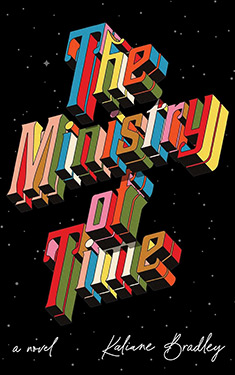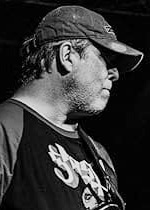
Added By: Administrator
Last Updated: Engelbrecht
The Collapsium
| Author: | Wil McCarthy |
| Publisher: |
Bantam Books, 2009 Easton Press, 2000 Del Rey / Ballantine, 2000 |
| Series: | The Queendom of Sol: Book 1 |
|
1. The Collapsium |
|
| Book Type: | Novel |
| Genre: | Science-Fiction |
| Sub-Genre Tags: | Hard SF Immortality Robots/Androids |
| Awards: | |
| Lists: | |
| Links: |
|
| Avg Member Rating: |
|
|
|
|
Synopsis
No writer stretches the boundaries of science fiction like Wil McCarthy does. Now this acclaimed author has crafted his most wildly ambitious and stunningly original novel yet, an unforgettable tale set in a wondrous future in which the secrets of matter have been unlocked and death itself is but a memory. A future also imperiled by a bitter rivalry between two brilliant scientists: one perhaps the greatest genius in the history of humankind, the other, its greatest monster...
In the eighth decade of the glorious reign of Her Majesty Tamra Lutui, the Queendom of Sol enjoys a peace and prosperity even gods might envy. In fact, two awesome technologies have given human beings all the powers--and caprices--of the gods they once worshiped. The first is wellstone, a form of programmable matter capable of emulating almost any substance: natural, artificial, even hypothetical. The second is collapsium, a deadly crystal, composed of miniature black holes, that allows the virtually instantaneous transmission of information and matter--including humans--throughout the solar system.
Bruno de Towaji, royal consort and the inventor of collapsium, dreams of building the arc de fin, an almost mythical device capable of probing the farthest reaches of spacetime. Marlon Sykes, de Towaji's rival in both love and science, is meanwhile hard at work on a vast telecommunications project whose first step consists of constructing a ring of collapsium around the sun. But when a ruthless saboteur attacks the Ring Collapsiter and sends it falling toward the sun, the two scientists must put aside personal animosity and combine their prodigious intellects to prevent the destruction of the solar system... and every living thing within it.
In his most daring work yet, Wil McCarthy blasts us into a mythical realm--by turns hilarious, magnificent, and deeply moving--where two archmasters of physics compete for love and honor against a backdrop of stellar catastrophe. The Collapsium is a bold work of the imagination.
Excerpt
in which an important experiment is disrupted
In the eighth decade of the queendom of Sol, on a miniature planet in the middle depths of the Kuiper Belt, there lived a man named Bruno de Towaji who, at the time of our earliest attention, was beginning his 3088th morning walk around the world.
The word "morning" is used advisedly here, since along the way he walked through the day and night and back again without pausing to rest. It was a very small planet, barely six hundred meters across, circled by an even tinier "sun" and "moon" of Bruno's own design.
Walk with him: see his footpath cutting through the blossomy mea- dow, feel the itch of pollens in your eyes and nose. Now pass through into the midday forest, with its shafts of sunlight filtering warmly through the canopy. The trees are low and wide, citrus and honeysuckle and dogwood, not so much a shady, mushroom-haunted wilderness as a compromise with physical law--taller trees would reach right out of the troposphere. As it is, the highest limbs brush and break apart the puffy summer clouds that happen by.
Pass the Northern Hills; watch the stream trickle out between them; see the forest give way to willows at its bank. The bridge is a quaint little arch of native wood; on the far side lie the grasslands of afternoon, the vegetable gardens tended by stoop-backed robots, the fields of wild barley and maize tended by no one, lit by slantwise rays. Behind you, the sun dips low, then slips behind the planet's sharply curved horizon. Despite the refraction of atmospheric hazes, darkness is sudden, and with it the terrain grows rocky--not jagged but hard and flat and boulder-strewn, dotted with hardy Mediterranean weeds. But here the stream winds back again, and as evening fades to night the channel of it widens out into cattail marshland and feeds, and finally, into a little freshwater sea. Sometimes the moon is out, drawing long white reflections across the silent water, but tonight it's only the stars and the Milky Way haze and the distant, pinpoint gleam of Sol. All of history's down there; if you like, you can cover the human race with your hand.
It grows colder; realize the planet shields you from the little sun-- the only local heat source--with the deadly chill of outer space so close you could literally throw a rock into it. But the beach leads around to twilight meadows, and the horizon ruddies up with scattered light, and then suddenly it's morning again, the sun breaking warmly above the planet's round edge. And there is Bruno's house: low, flat, gleam- ing marble-white and morning-yellow. You've walked a little over two kilometers.
Such was Bruno's morning constitutional, very much like all his others. Sometimes he'd fetch a coat and take the other route, over the hills, over the poles, through cold and dark and cold and hot, but that was mainly a masochism thing; the polar route was actually shorter, and a good deal less scenic.
He'd already eaten breakfast; the walk was to aid his digestion, to invigorate his mind for the needs of the day: his experiments. The front door opened for him. Inside, robot servants stepped gracefully out of his way, providing a clear path to the study, bowing as he passed, though he'd told them a thousand times not to. He grumbled at them wordlessly as he passed. They didn't reply, of course, though their bronze and tin-gray manikin bodies hummed and clicked with faint life. Mechanical, unburdened by imagination or want, they were utterly dedicated to his comfort, his satisfaction.
Another door opened for him, closed behind him, vanished. He waved a hand, and the windows became walls. Waved another, and the ceiling lights vanished, the floor lights vanished, the desk and chairs and other furnishings became optical superconductors: invisible. Projective holography created the illusion of his day's apparatus: fifty collapsons, tiny perfect cubes visible as pinpoints of Cerenkov light, powder-blue and pulsing faintly, circling the holographic planet in a complex dance of swapping orbits.
He'd spent the past week assembling these, after his last batch had gone sour.
Assembling them? Certainly.
Imagine a sphere of di-clad neutronium, shiny with Compton-scattered light. It's a sort of very large atomic nucleus; a billion tons of normal matter crushed down to a diameter of three centimeters so that the protons and electrons that comprise it are bonded together into a thick neutron paste. Left to itself it would, within nanoseconds, explode back into a billion tons of protons and electrons, this time with considerable outward momentum. Hence the cladding: crystalline diamond and fibrediamond and then crystalline again, with a bound layer of well-stone on top. Tough stuff indeed; breaking the neutrons free of their little jail was difficult enough that Bruno had never heard of its happening by accident.
These "neubles" were the seeds of seeds--it took eight of them, crushed unimaginably farther, to build a collapson--and the little "moon" was actually just Bruno's storage bin: ten thousand neubles held together by their own considerable gravity. Another fifteen hundred formed the core of the tiny planet, a sphere about half a meter across, with a skeleton of wellstone built on top of it, fleshed out with a few hundred meters of dirt and rock and an upper layer neatly sculpted by robots and artisans.
Copyright © 2000 by Wil McCarthy
Reviews
There are currently no reviews for this novel. Be the first to submit one! You must be logged in to submit a review in the BookTrackr section above.
Images
No alternate cover images currently exist for this novel.



















 Full Details
Full Details





